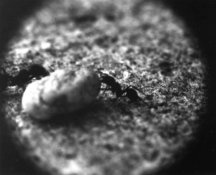Speaking of approach, here's my general suggestion:
1. identify what is important (not just useful)
2. determine if it's worth tackling
3. define your goal based on 1 and 2
4. identify challenges (loosely separate from trivial things that require little work to achieve)
5. do research, consult literature and experts, anything it takes to gather relevant information/data to deal with #4
6. consider all possible alternate options and narrow down to the best
7. test, test, test
8. scrap it and start over, unless the result is up to expectation of #3.
Do not add things without knowing what the objective is.
Do not change things without knowing what the objective is.
Do not use things without confirming they are effective and robust.
If you dont identify a problem, you will not solve anything.
If you dont define an objective, you will not achieve anything.
If you dont identify whats important, your work wont be important.
If you dont determine whats worthwhile, your work wont be worth much.
Creativity plays role in steps 1 through 6. You have to be critical of your work in steps 7 and 8. Otherwise, you are only fooling yourself.
Thanks for this. I've printed it out and stuck it to the wall of my cube. It reminds me a little of of George Box's explanation of the scientific process(*).
(*) George Box, Stuart Hunter and William G. Hunter, Statistics for Experimenters, Wiley & Sons, 1978






 Oh well, noob lessons learned
Oh well, noob lessons learned  . I will hopefully have everything mixed until tonight (writing this while the borax dissolves) and can report back later.
. I will hopefully have everything mixed until tonight (writing this while the borax dissolves) and can report back later.